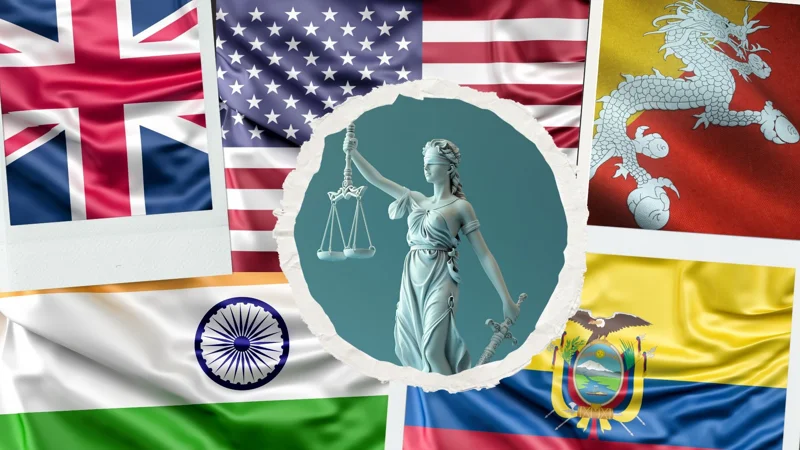The world’s most unique constitutions
On August 30, 1995, Kazakhstan adopted its current Constitution through a nationwide referendum. Throughout history, constitutions have taken different forms, reflecting the values of each society. Let’s look at some of the most remarkable examples around the world, Kazinform News Agency correspondent reports.

The birth of modern constitutions
The roots of constitutional tradition go back to ancient law codes: the Code of Hammurabi in Babylon, Solon’s reforms in Athens, and the Twelve Tables in Rome. These established the principle of written laws that applied to everyone. A major milestone came with England’s Magna Carta of 1215, which for the first time limited the monarch’s authority and became a prototype of modern constitutions.
The oldest constitutions
One of the world’s oldest constitutions still in force is San Marino’s Fundamental Law, adopted in 1600. Based on a fourteenth-century city charter, it was only supplemented in 1974 with a Declaration of the Rights of Citizens and the Principles of Government.
The first constitution in the modern sense is the United States Constitution, adopted in 1787. For the first time, it enshrined both the separation of powers and federalism in a single document, becoming a model for many other countries. The original is preserved in a secure glass case at the National Archives in Washington, guarded with great care. Each year, millions of visitors come to see this historic document, which has been in force for more than two centuries.
France and its many constitutions
France is a striking example of how constitutions reflect political upheavals. Since the French Revolution of 1789, the country has repeatedly shifted from monarchy to republic, from empire back to kingdom, and each new era brought its own constitution.
The first French Constitution, adopted in 1791, introduced the principle of popular sovereignty but lasted less than a year. In the 19th century, every major change of regime, from Napoleon’s Empire to the Bourbon Restoration, the Second Republic, and the Second Empire, came with a new fundamental law.
The world’s longest and shortest constitutions
India’s Constitution, adopted in 1950 after independence, is the most extensive in the world with 146,385 words in its English-language version. With more than 400 articles and over 100 amendments, it runs hundreds of pages and covers almost every aspect of governance.
It blends elements from different legal traditions: the British parliamentary model, American-style separation of powers and federalism, as well as uniquely Indian features such as the linguistic and religious diversity.
On the other hand, the shortest constitution belongs to the Principality of Monaco. It contains about 3,800 words.
Ecuador and the rights of nature
In 2008, Ecuador became the first country to recognize the rights of nature in its Constitution, granting ecosystems the right to protection and restoration.
Just three years later, in 2011, the country saw the world’s first successful court case based on this principle. Residents filed a lawsuit against the provincial government of Loja over the construction of the Vilcabamba–Quinara road. The project, carried out without environmental studies, dumped large amounts of rock and soil into the Vilcabamba River, increasing the flow, raising the risk of floods, and endangering local communities.
The Provincial Court of Loja ruled in favor of the river, recognizing a violation of its constitutional rights. This landmark decision became the first legal victory for the Rights of Nature not only in Ecuador, but globally.
Iceland and the online constitution
In 2011, Iceland became the first country where citizens directly took part in drafting a new constitution. After the Supreme Court annulled elections to a Constitutional Assembly, parliament set up a Constitutional Council of 25 elected members. Its work was carried out openly through a dedicated website, social media, and live broadcasts, allowing citizens to propose amendments, comment on articles, and join the debate.
Within four months, the council produced a draft constitution, which was supported by a majority in a 2012 advisory referendum. Yet in 2013, parliament ultimately rejected the document, leaving the new constitution unadopted.
Bhutan and the constitution of happiness
Bhutan, a small Himalayan kingdom with a population of about 800,000, is deeply rooted in Buddhist traditions that emphasize spiritual values, harmony with nature, and community life. In 2008, the country enshrined the concept of Gross National Happiness in its Constitution, making clear that national progress should be measured not only by economic growth but also by quality of life, cultural preservation, and environmental sustainability.
The absence of a constitution
Unlike most countries, the United Kingdom has no single written constitution. Instead, its political system is based on what is often called an “unwritten constitution,” made up of multiple sources.
These include the Magna Carta of 1215, the Bill of Rights of 1689, the Act of Union of 1707, acts of Parliament, judicial precedents, and even long-standing political customs that are not codified but are strictly observed.
Similar situations can be found in several other states, such as Israel, Saudi Arabia, New Zealand, and Canada, which also lack a single codified constitutional document.
Israel has no formal constitution but instead relies on a series of “Basic Laws” passed by the Knesset.
Saudi Arabia bases its governance on Islamic law (Sharia), with the Qur’an and the Sunnah considered the ultimate sources of authority.
New Zealand operates under a mix of statutes, court decisions, and constitutional conventions.
Canada also lacks a single constitutional document but instead relies on a collection of statutes and conventions, the most important of which are the Constitution Acts of 1867 and 1982.
Earlier, Kazinform News Agency reported
